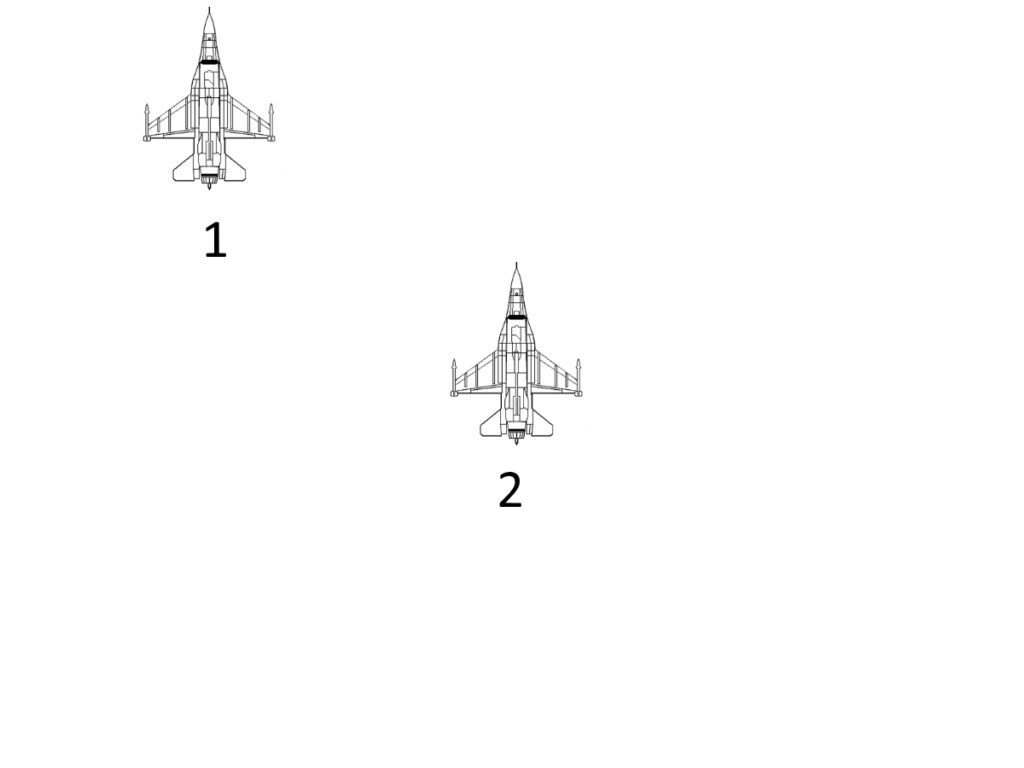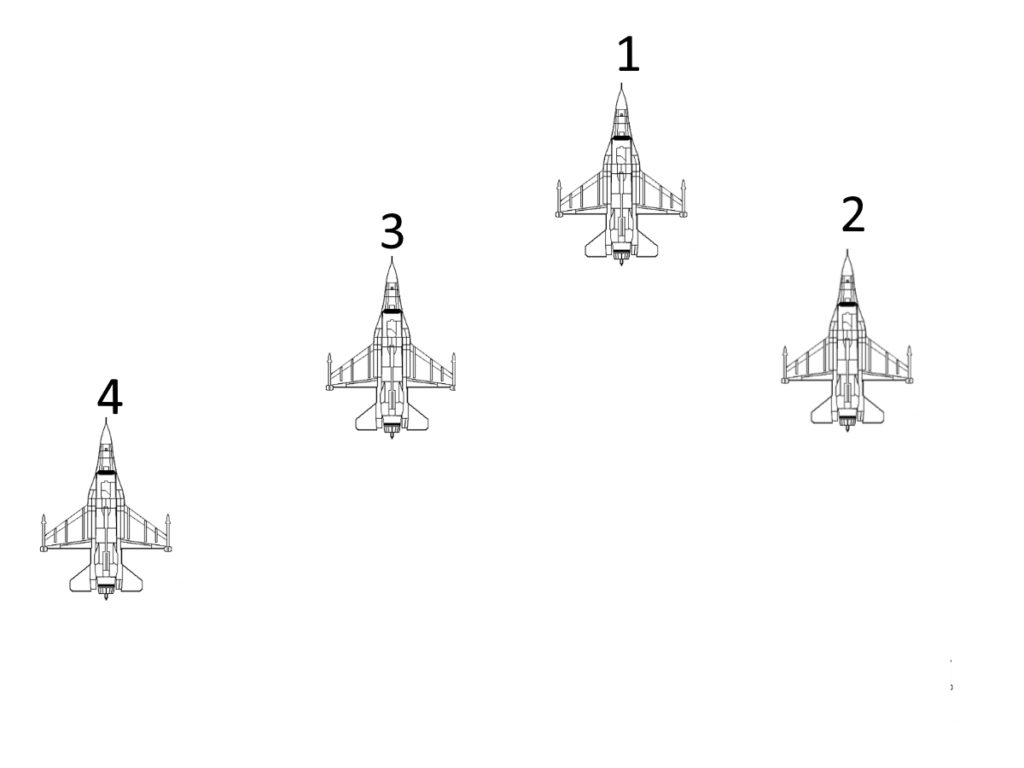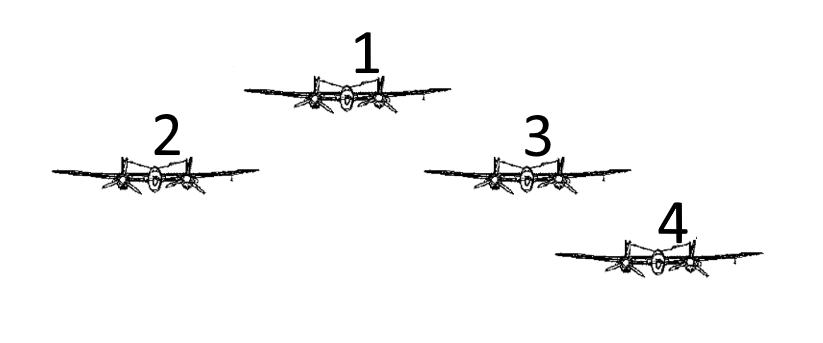The Air Combat Learning Laboratory
Tactical Formations
Tactical formations are employed in order to bring multiple aircraft to bear upon the enemy together. Formations are the basis of all wingman and larger engagement tactics. The easiest travel formations to employ in the virtual aerial combat arena is the echelon and finger four formations. This is due to the lack of or limited peripheral vision in the online simulation environment. Line abreast formations are historically more effective but more difficult to employ in the virtual world. Combat spread or line abreast formations should be used be used when entering a known hostile zone.
As we intend to employ the tactical doctrines of Double Attack, Loose Deuce and Fluid Four, our combat formations will be of a spread variety. Horizontal separation of aircraft should be approximately 1 to 2 turn radii.
Formation Organization
Military units are organized using specific terminology. The precise terminology will depend on the country and branch of service.
For example in the United States Army the basic unit is the soldier.
Soldiers are grouped into Squads Squads are grouped into Platoons Platoons are grouped into Companies Companies are grouped into Battalions And so on up to the Army level.
The Air Forces of the world do much the same thing with pilots and aircraft. For simplicity sake we will use a system based loosely on the USAF for training purposes.
The basic unit is one aircraft
(and pilot)
2 or more aircraft will be grouped into an Element under an Element Leader 2 or more elements comprise a Flight under a Flight Leader
2 or more flights comprise a Squadron under a Squadron Commander
2 or more squadrons comprise a Group under a Group Commander Online Online flying rarely exceeds Group level operations
Below are examples of the Element Echelon formation

W

The element formation is used to build the flight formation.
The primary travel formation is known as the “Finger Four”, named thusly because the formation resembles the tips of the fingers on a flat human hand.

The numbers in the formation refer to individual position. In a single element, the Lead Pilot is number one, his wing man is number 2. This numbering system carries over into Flights. A flight is normally 3 or 4 aircraft but could be larger as necessary. We will assume a four ship formation as a Flight going forward. In a flight of four, Flight Lead is 1, his wingman is 2. The lead pilot for the second element in the flight is 3 and his wingman is 4. Thus, odd numbers will indicate flight or element leads and even numbers will indicate wingmen.
Below is an illustration of the vertical spacing in the formation. The vertical stacking allows easier visibility and formation maneuverability by lessening the collision hazard.

Large Formations
Multiple flights can travel together in formation. The individual flights may be in finger four formation while the larger formation may take another form such as line abreast, “Vee or Vic” (Also called wedge), trail or echelon.

Above the flights are in right hand finger four and squadron is in “Vic” formation.
The “Vic” formation is a convenient one for a three flight as shown below

Combat Spread
Formation defensive lookout and maneuverability are of prime importance in an aerial engagement. The most flexible combat formation is the combat spread. It is a line abreast formation with a spread between aircraft that allows effective defensive lookout as well as maneuverability. The spread formation also allows the wingman to devote less of his time to formation station keeping.
